As a former ER nurse and a current family practice clinician, one of the topics I get asked about most frequently by my sailing friends is, “What items should go into my first aid kit?”. This loaded question is tricky for me to answer in one breath. Frankly, I could go on and on about medical preparedness, but I’ll spare you my ramblings and list some of my must-haves for a day-sailing medical kit. This list is designed specifically with the day sailor in mind and is intended for folks within eight hours of professional help on a modest-sized vessel.
1. Basic First Aid Kit
If you purchase only one item on this list, let it be this one. It should come as no surprise that the most common injuries to occur while day sailing are cuts and bruises. Any basic medical kit will come with simple bandages and antibiotic ointment, but I love the Mountain Series Hiker Medical Kit by Adventure Medical Kits TM.
This water-resistant kit is well organized and contains a solid foundation of items with “wilderness medicine” in mind. The kit is designed for individuals without immediate access to professional care; hence, it works beautifully for sailors.
Inside, you’ll find:
- antiseptic wipes
- moleskin to prevent blisters
- tweezers to yank out a pesky sliver
- common OTC medications
- a good number of bandages
- some wound closure items
- scissors
- antibiotic ointment
- burn cream
- and so much more
The Mountain Series Hiker kit also comes with a medical guide written by Eric Weiss, M.D., with instructions on using your kit. The kit is a super portable eight ounces, about the size of a Wisconsin-sized peanut butter and jelly sandwich. There’s also space in the bag for a few other items (this is where I come in).
Ideally, I would tell you all to get a bag like the one carried by Mary Poppins, but this kit is an excellent start to any day sailor’s medical bag. And all for less than $30.
2. Instant Ice Pack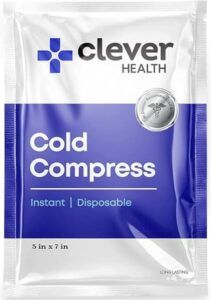
These little packs are affordable and easy to use, and you’ll be glad you have them on board when those inevitable bruises and cuts or minor burns occur. Simply pop the inner bag and shake vigorously to activate. These packs are so soothing you’ll almost forget all the phrases you just taught the kids after catching a barefoot toe on a deck cleat.
3. Warming Blankets and Hot Hands Hand Warmers
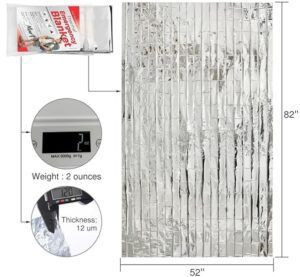
These tiny items—warming blankets and hand warmers—can make a world of difference to your quality of life if you end up needing them: for all the times the weather ends up being a bit nastier than expected or for when you or a crew member didn’t layer their clothing quite right (been there, had the frost nip to prove it), or for an unexpected trip into the drink.
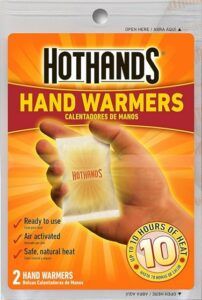
4. Eyewash Bottle

This little 4-oz bottle will be your new best friend if you end up with a foreign body (like an insect, chemical irritant, dirt, shark tooth etc.) stuck in your eye. These bottles offer a great mini flush until you can get back to land and have your eye professionally cared for. Eye injuries are, simply put, incredibly distracting. Losing your vision due to the tearing associated with even a minor corneal abrasion, even temporarily, while single handing could have serious consequences.
5. 3” Ace Wrap
An ace wrap is a great addition to a first aid kid. They can help you give some extra support to strained or sprained joints or strap an ice pack onto an injured body part to keep your hands free (see number two above) and can also be used to make a sling in a pinch.
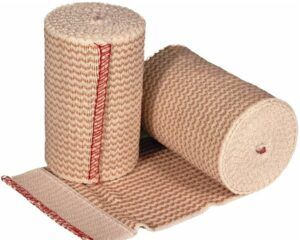
6. Self-Adhesive Elastic Bandage
This stuff works fabulously to secure gauze over a wound and does so by sticking to itself and not to skin, so this is the perfect product for those who are sensitive to adhesives. It can also help you apply a bit more pressure to a bleeding wound.
And this multicolored pack is great for kids with minor boo-boos—it’s also arguably cheaper than cartoon character band aids. These types of wraps do tend to tighten up with continued wear, so make sure to check little ones often to ensure the wrap isn’t getting too tight (i.e. causing color change or coolness to the area where it is applied).
7. Plastic Wrap
Plastic wrap is a well-known tool in the ER world. Specifically, we use it in the treatment of burns, making it a great item to add to your first aid kit if there’s space aboard and the possibility of burns (i.e. a working galley, engine, grill, tea kettle etc.).
If a burn occurs while sailing, clean it with cool water, dry gently, slather on some burn cream, then wrap the area tightly in plastic wrap. Keeping the fresh air off the newly exposed and screaming nerve endings is an incredibly easy way to reduce pain while you sail back toward medical help. Pro tip: If a blister forms DON’T pop it!
8. Mini (or Not So Mini) Bolt Cutters

Technically, mini bolt cutters would go in your sailing toolbox rather than your medical kit, but hear me out, one word: “fishhooks”. If you happen to stick yourself with a fishhook, it can be very challenging to remove it without professional help (and our dear friend, lidocaine).
I have seen some particularly unlucky fishermen come into the ER with a 4-inch silicone minnow hanging from their eyebrow, and if you’re miles from shore, that will be one very long sail home. If you have a sizeable fake fish hanging from your face (or other body part), it can be incredibly helpful to at least be able to cut away the excess part of the lure with some bolt cutters.
You’ll want to leave enough of the actual hook shank intact so that an urgent care or ER professional can get a hold of it to remove it but being able to remove any additional hooks/weight from the lure can be very helpful in the short term regarding your ability to function after getting stuck, as well as prevent additional injury from any other hooks attached to the lure.
9. Tourniquets

Tourniquets save lives. I personally recommend keeping them on your boat, in your glove box, and even in your purse. You never know when you will need one, and you will thank your lucky stars for having one handy when you do.
Tourniquets should be applied to a limb anytime you can’t get bleeding controlled and/or anytime you see pulsatile bleeding (like the start-stop spray of a squirt gun), indicating an artery has been severed.
If blood is “spraying” or “pouring,” a tourniquet could buy you valuable time until either professional help arrives or you can make it back to land. If one tourniquet doesn’t stop severe bleeding, you can apply an additional tourniquet further up the limb, towards the heart. Meaning, don’t take the first one off, just add a second one. Make sure they are tight, tight, tight, and call for help!
10. CPR Mask
Like tourniquets, I hope none of you will ever need a CPR mask. I hope you all come up to me decades from now and tell me what an utter waste of money this was. But this is an item that you will be very glad you have on hand if the worst-case scenario occurs.
I know I carry a heavy implicit bias here, but everyone should work towards a CPR certification; check out the American Red Cross for training opportunities near you. They offer real-world advice that can help you save the life of a loved one when/if disaster strikes. The immense complexity of CPR at sea deserves its own article, but for now, consider a mask an essential item anytime you leave the safety of land behind.
Bottom Line
Fair winds, friend. And may your medical kits only need restocking due to expiration dates.
This article was first published on 1 March 2024 and has been updated.


































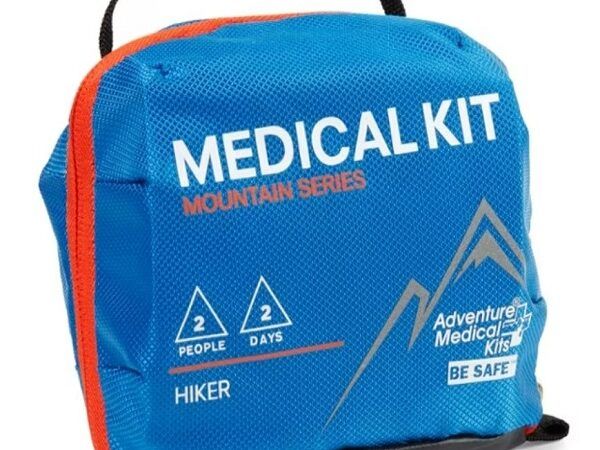





BCLS and an AED ?? We are not getting any younger.